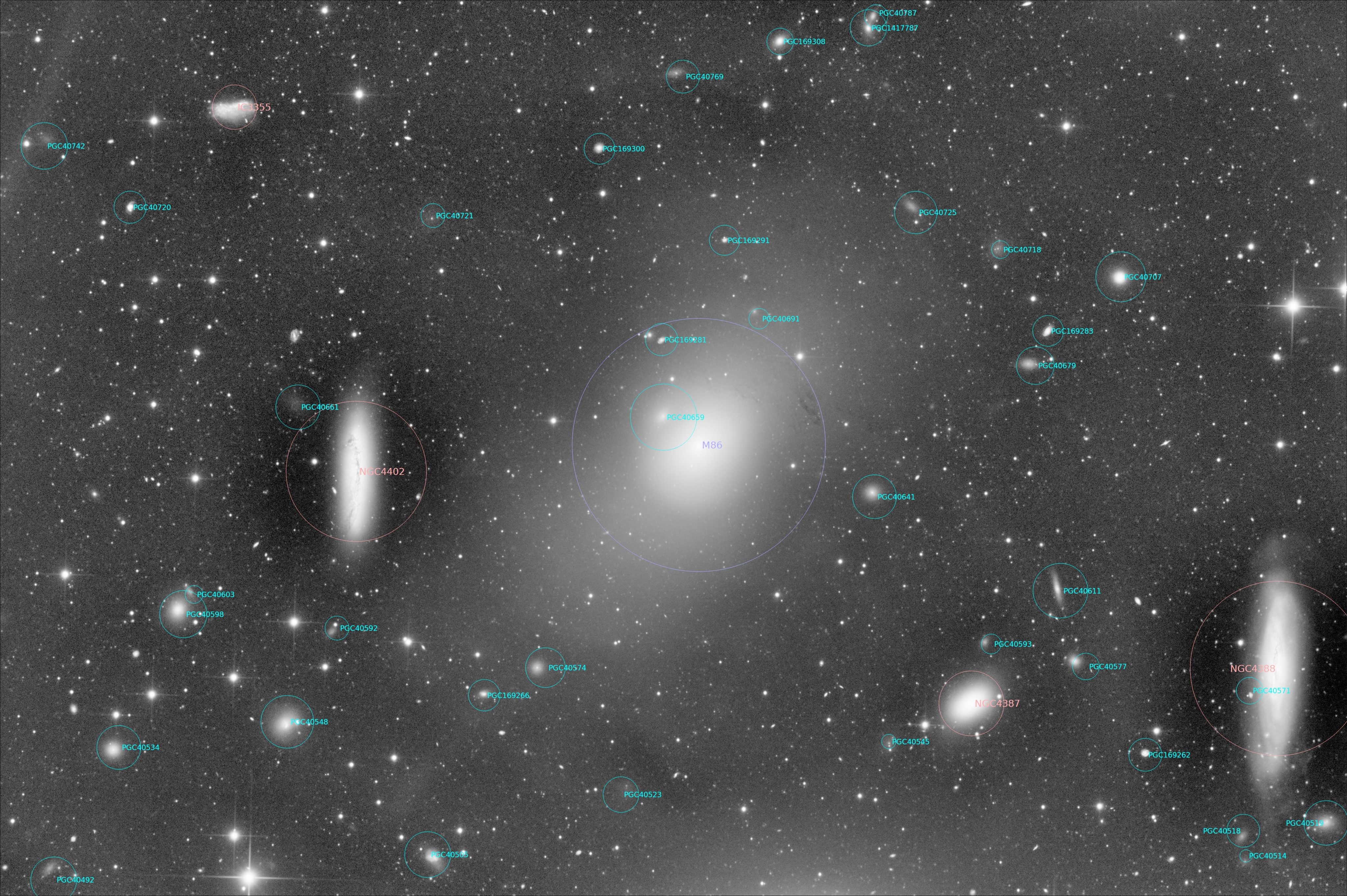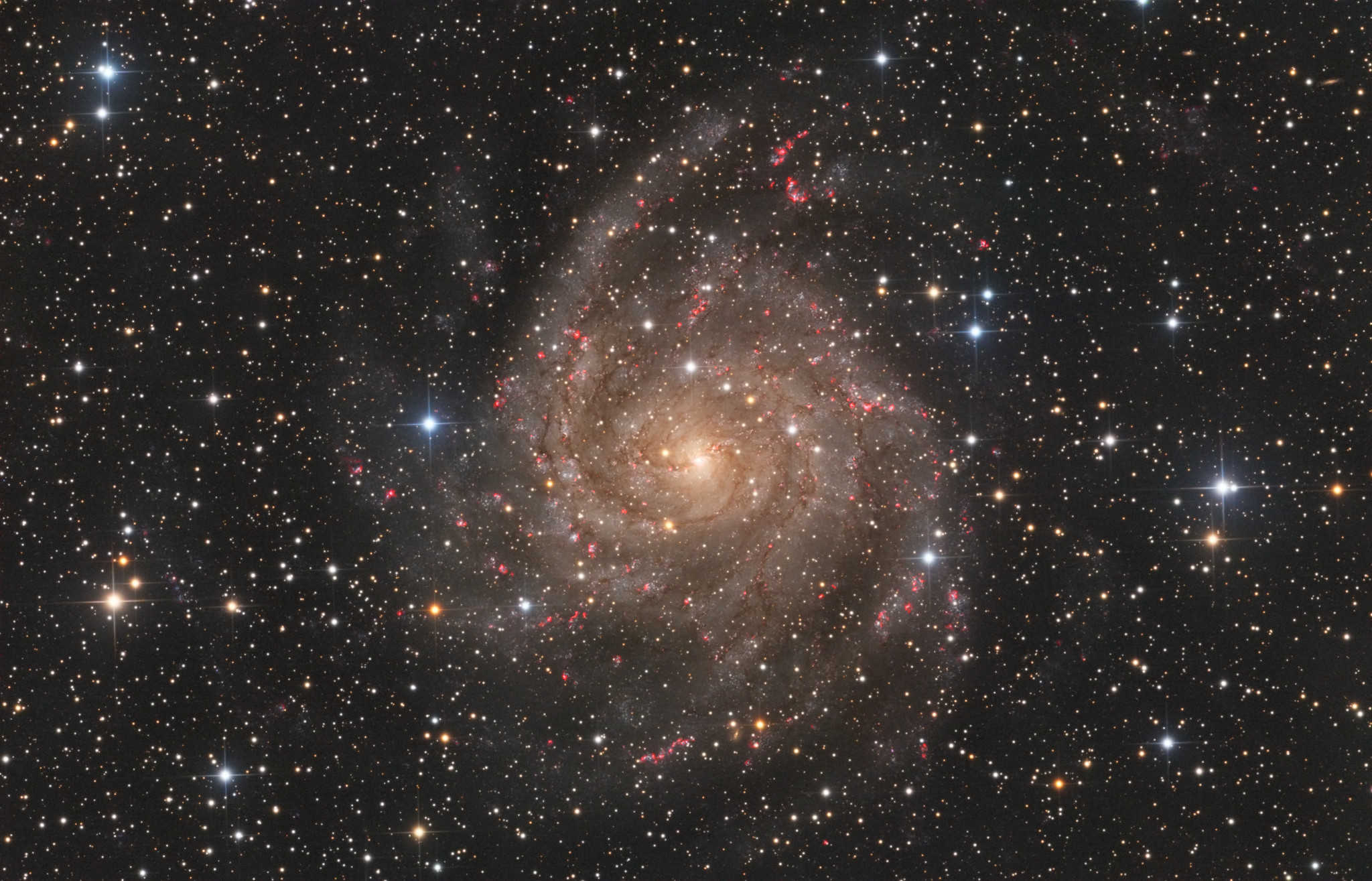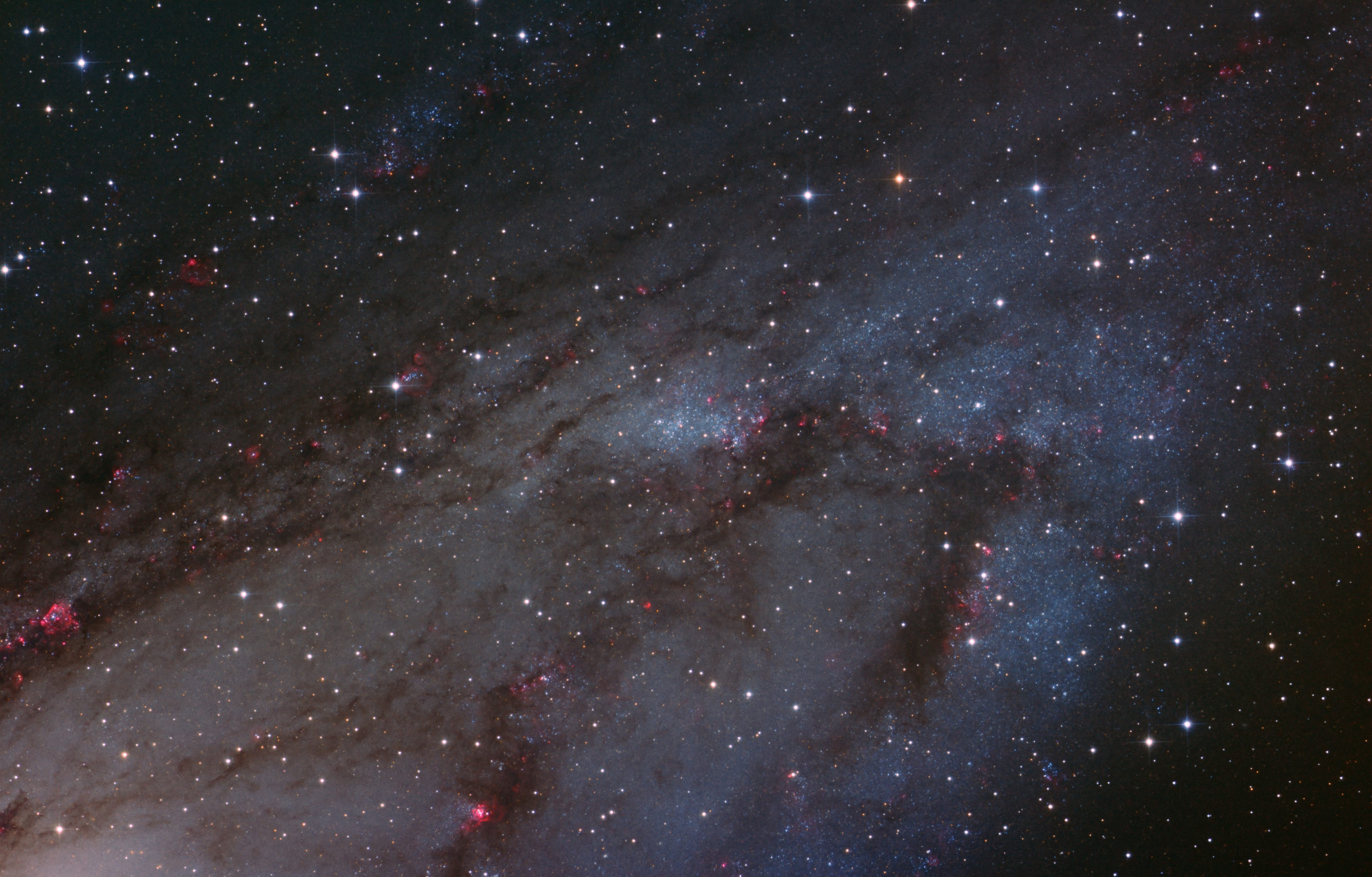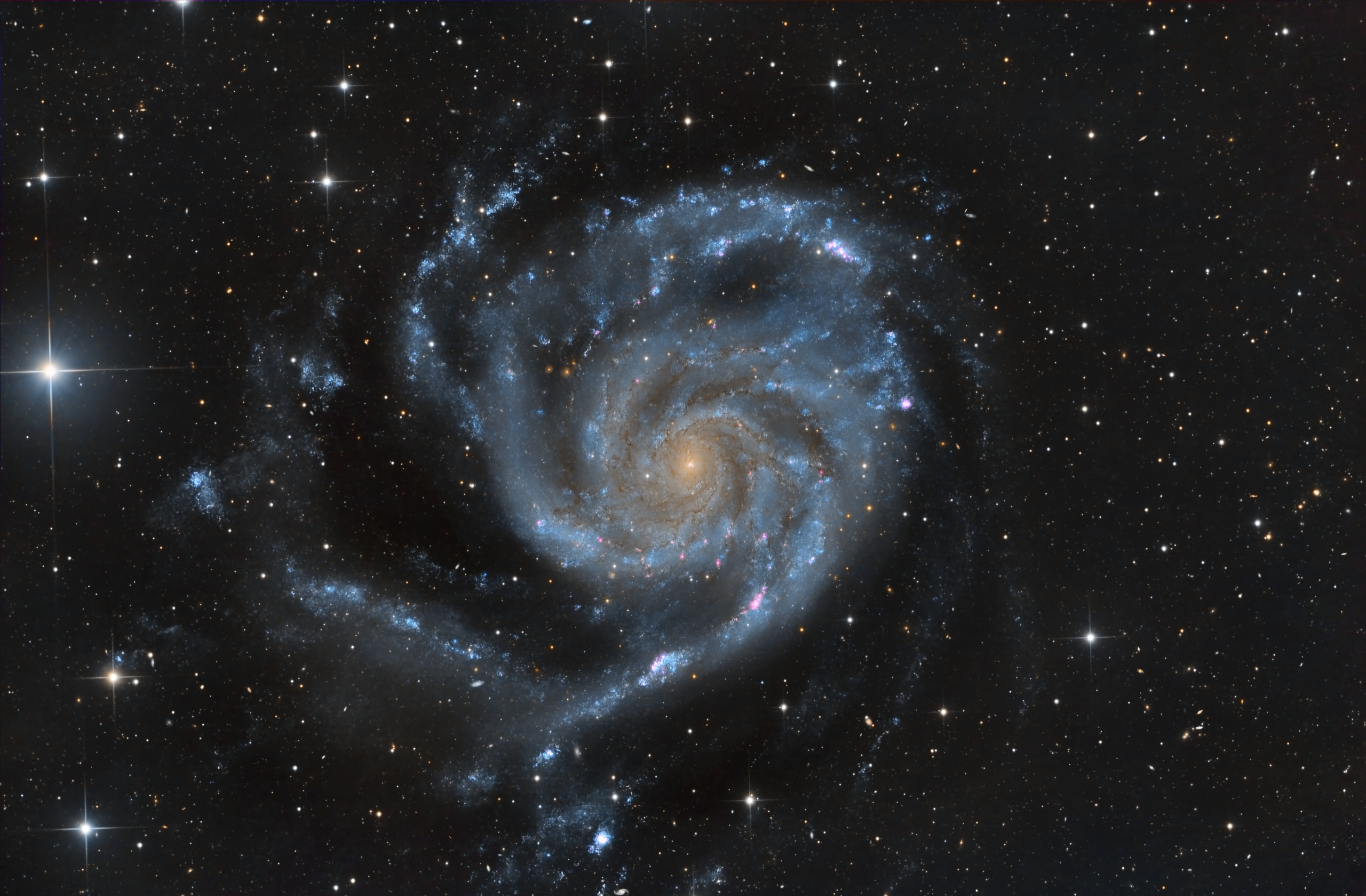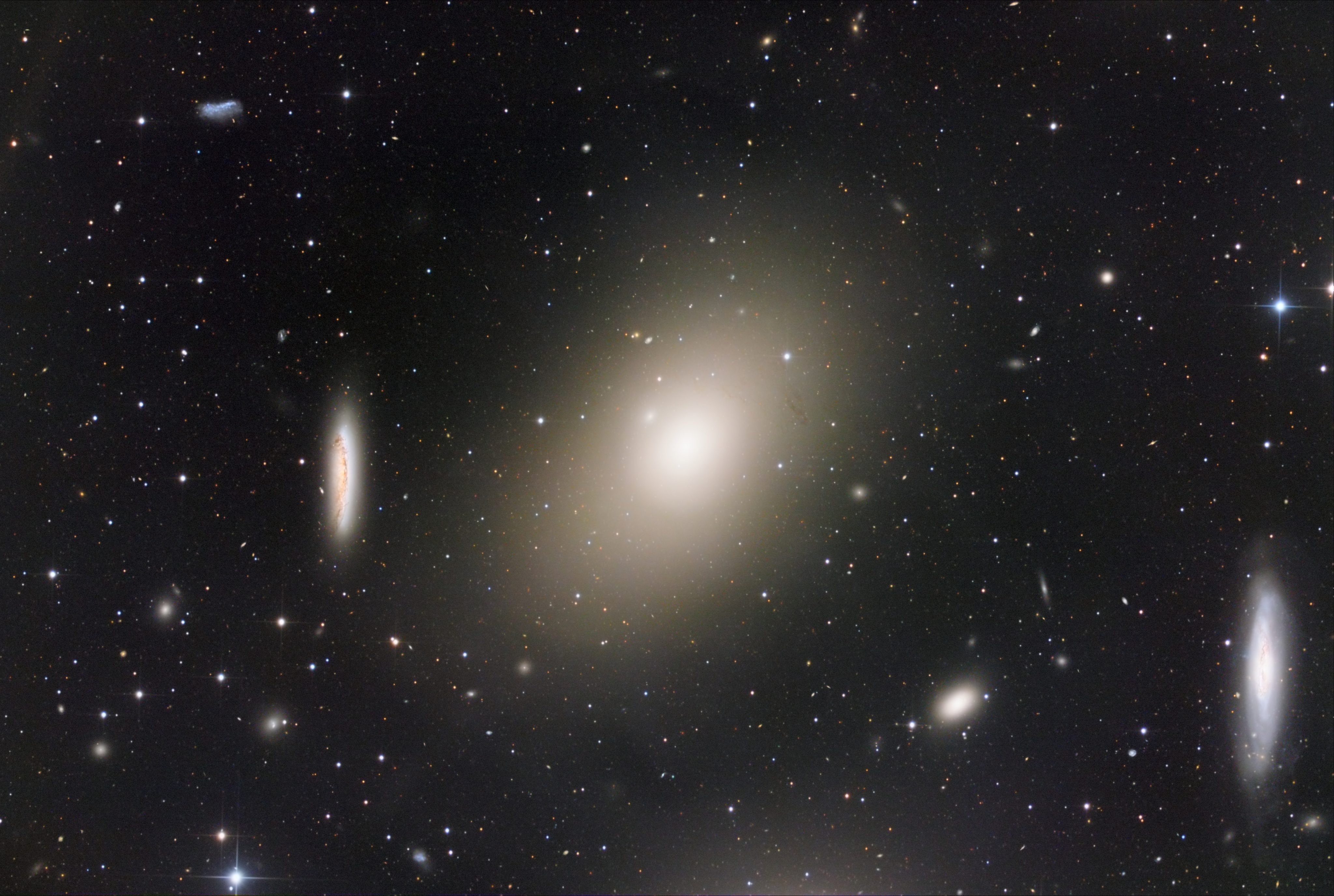
Messier 86 (M86, NGC 4406) is one of the most prominent elliptical galaxies in the Virgo Cluster of galaxies, located relatively nearby – just 55.6 Mly away from Earth, appearing quite bright at magnitude 8.9. It can be spotted in telescopes of moderate sizes at dark sky locations, and usually is not imaged too often by advanced astrophotographers, as it is considered somewhat featureless, especially when compared to grand spirals like the Whirlpool Galaxy, or the myriads of astonishing, complex emission nebulae of the Milky Way.
One interesting aspect of the M86, however, is that it shows a negative redshift (blueshift) of z = – 0.001, with its heliocentric radial velocity measured at -302 km s-1. In other words, the M86 is moving towards Earth, as opposed to the majority of other galaxies which are redshifted and are receding away from us due to the so called Hubble Flow – the expansion of the universe. Out of approximately a million galaxies with measured redshifts, only about a hundred are blueshifted like M86, so this situation is quite rare (Karachentsev & Nasonova 2010).
The blueshift of M86, along with its satellites, is explained by the “infall” of these galaxies towards the center of the Virgo Cluster. The M86 is estimated to pass through the core of the cluster approximately every 5 Gyr (Elmegreen et al. 2000). This local gravitational “dance” of galaxies within the cluster makes M86 move towards Earth “from behind” the cluster’s center, as seen from Earth, at the velocity greater than the Hubble Flow, hence the blueshift (Böhringer et al. 1997).
On its journey through the cluster, the M86 appears to be traveling supersonically, at the velocity of approximately Mach 2 (Ehlert et al. 2013). As it is located within about a hundred kiloparsecs to nearby galaxies, it is experiencing ram pressure stripping as it plunges into the intracluster medium (ICM). This intergalactic “wind” the M86 and other galaxies experience within the cluster environment effectively strips their material, so this phenomenon is common in galaxy clusters.
The faint wisps of dust visible in this image overlaying the optical halo of M86 actually belong to the M86 galaxy itself, or at least they are located in the Virgo Cluster and are not part of the foreground medium. They are coincident with the structure called M86-SE detected at far infrared wavelength using the SPIRE imaging spectrometer on board the ESA’s Herschel Space Observatory (Gomez et al. 2010), and, also, optical SDSS absorption features called “A” and “B” in the paper by Elmegreen et al. (2000). According to one interpretation these dust streamers could have been ram pressure-stripped from the dwarf galaxy VCC 882 (PGC 40659 in the annotated image linked below), prominent just north of the M86’s brightest region in this image, when this dwarf passed through the M86. Another interpretation is that they could have been stripped from NGC 4438 – one of the “Eyes Galaxies” of the Markarian’s Chain, located just outside this image.
Messier 86 Full Scale Image (2560 x 1720 pixels)
This LRGB image was obtained with the A1 telescope installed at Alnitak Remote Observatories in Nerpio, Spain:
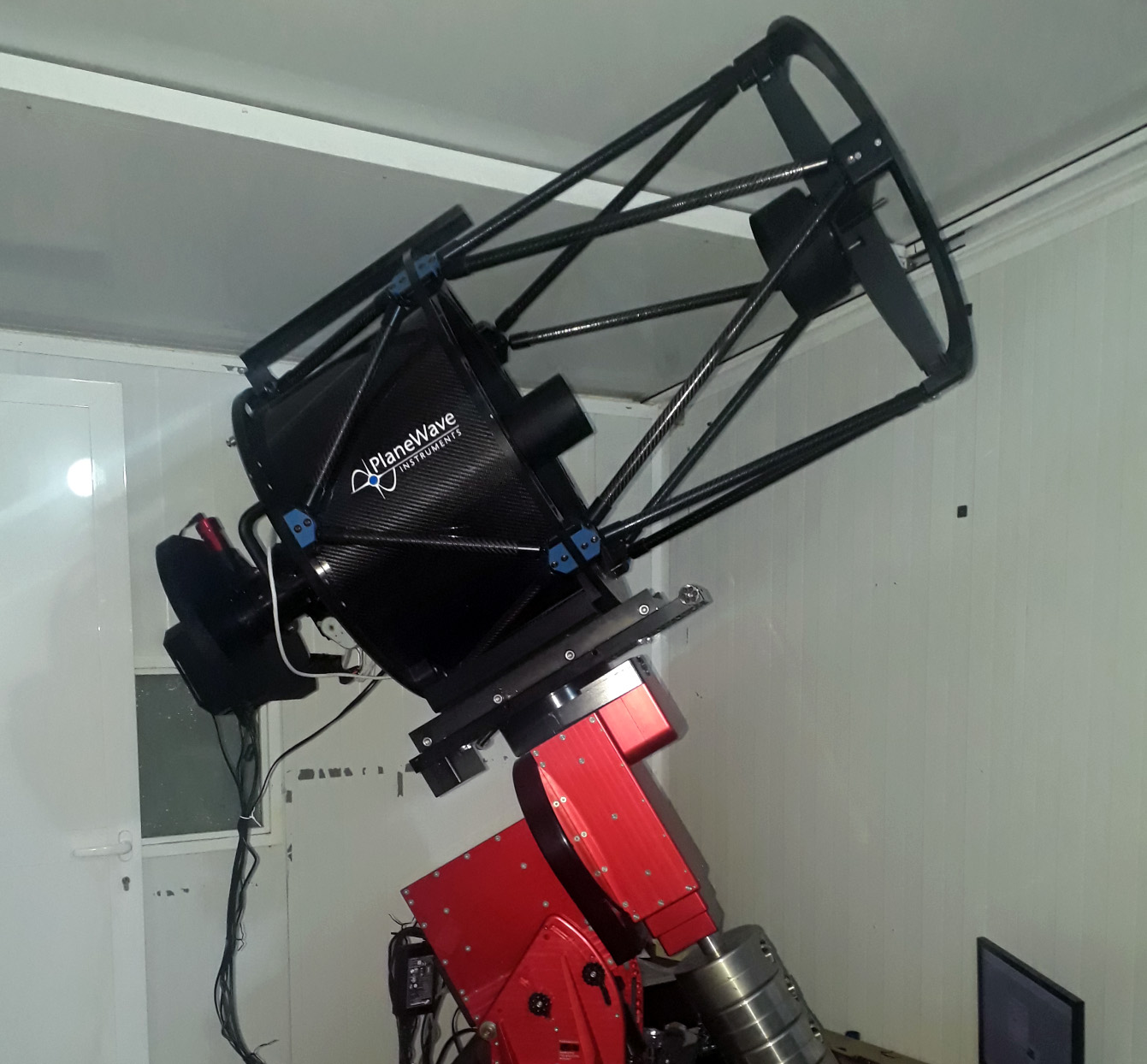
- PlaneWave CDK17 0.43 m f/6.8 Corrected Dall-Kirkham
- Software Bisque Paramount ME
- Moravian Instruments C3-61000 Pro, Back-Illuminated CMOS Camera
- Chroma LRGB Filters
- FLI CenterLine CL-1-14 12+2-position Dual Color Filter Wheel
- Optec Sagitta OAG Off-Axis Guider with ASI174MM Guide Camera
Software used ACP DC3, MaximDL Pro, TheSky X, DeepSkyStacker, PixInsight and GIMP.
A Quasar in Unreachable Universe
The maximum redshift object in this image, according to the NASA/IPAC Extragalactic Database (NED), is WISEA J122544.87+130636.3 at z = 4.35:

This corresponds to the light travel time of 12.326 Gyr and the comoving radial distance of 24.719 Gly. Assuming this is a quasar and the z measurement is correct, this puts this object into the early universe – the Era of Quasars which peaked at about z ~ 2.2, among the first active galactic nuclei. This portion of the universe is completely and forever unreachable for us, by rockets or signals, as these galaxies are now receding from us faster than the speed of light (Gott et al. 2005).
Globular Clusters
Plenty of M86’s globular clusters are visible, identified in the Subaru Spectroscopy of the Globular Clusters in the Virgo Giant Elliptical Galaxy M86 by Hong Soo et al. (2012) and other sources:

Globular clusters also appear detectable in the nearby galaxy NGC 4402 which appears to the left of M86 in the original image:

REFERENCES
Böhringer, H., Neumann, D., Schindler, S. 1997, ApJ, 485, 439
Elmegreen, D., Elmegreen, B., Chromey, F., Fine, M. 2000, ApJ, 120, 733
Ehlert, S., Werner, N., Simionescu, A. et al. 2013, MNRAS, 430, 2401
Hong Soo, P., Myung Gyoon, L., Ho Seong, H. 2012, ApJ, 757, 184
Gomez, H., Baes, M., Cortese, L. et al. 2018, A&A, 518, L45
Gott, J., Jurić, M., Schlegel, D. et al. 2005, ApJ, 624, 463
Karachentsev, I., Nasonova, O. 2010, Astrophysics, 53, 1
Annotated Image:
